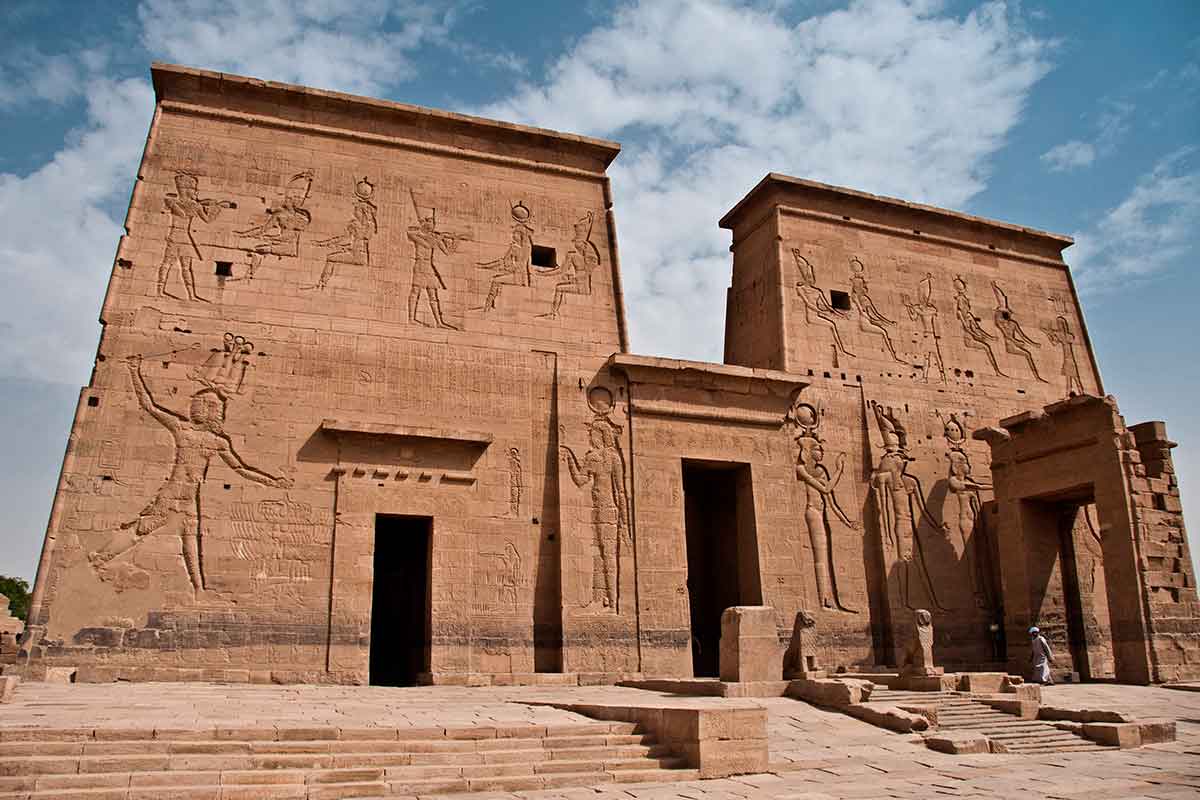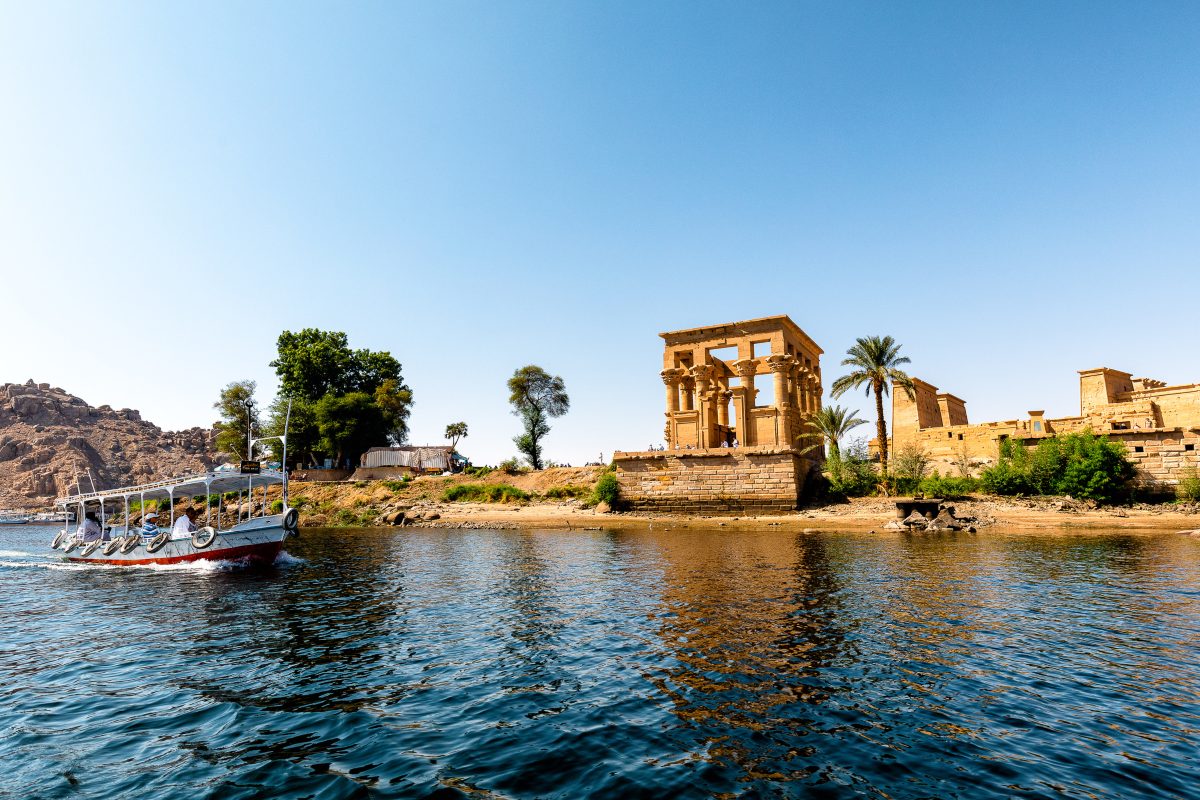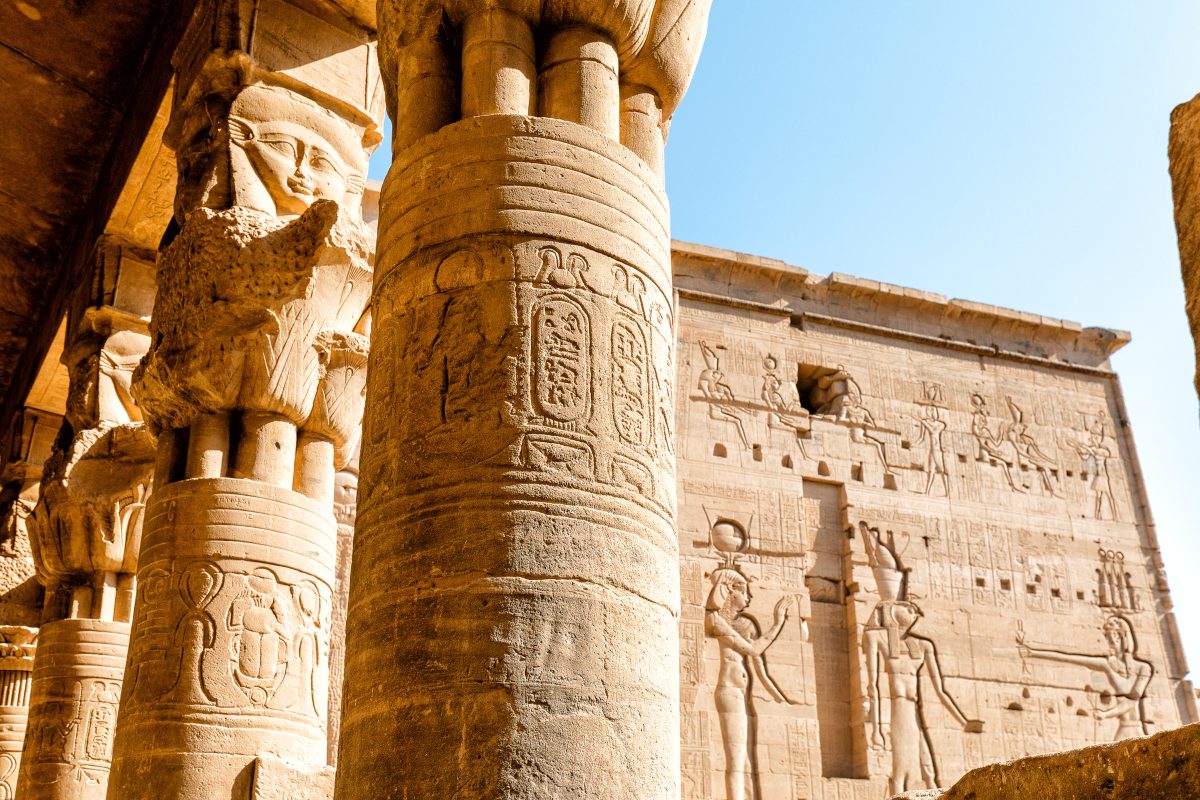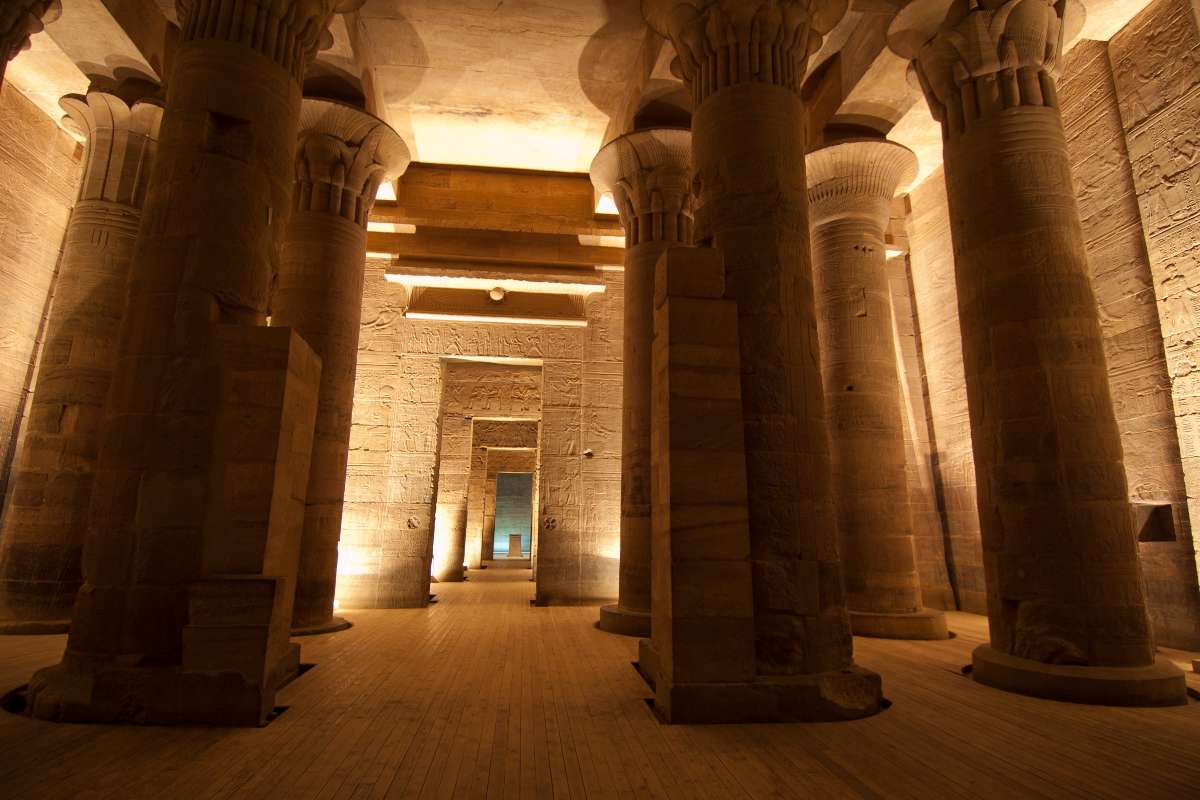The Temple of Philae is often regarded as the final grand temple of Ancient Egypt, located in a privileged position that adds a unique romanticism to its charm, especially when experienced during sunset or at night, as we’ll describe below. As such, it is an essential excursion from Aswan, and on this page, we will provide you with all the details you need to plan your visit.
The Temple of Philae is named after the island on which it was originally situated in the southernmost region of Egypt, but it was later moved to the neighboring island of Agilkia, as we’ll explain below. In reality, it’s more appropriate to refer to the Temples of Philae since there are several structures located here.
While none of them can claim antiquity comparable to that of other monuments of Ancient Egypt, this has actually worked to their advantage: not only are they undeniably beautiful and in a fascinating dialogue with the surrounding nature, but they have also been spared the ravages of time to a significant extent. This means that all visitors to the Temple of Philae can benefit from a well-preserved and awe-inspiring experience.
The oldest structure at the Temple of Philae is the kiosk from the time of Nectanebo I (4th century BC, Dynasty XXX). The bulk of the complex dates back to the Ptolemaic period, with Ptolemy III (3rd century BC) and Ptolemy XII (1st century BC) being some of its main creators. The Romans also left their mark, as evidenced by Trajan’s kiosk (in the 2nd century AD).
From the 6th century onwards, the Christians also left their mark, but not for good. Iconoclastic rage caused some images of goddesses to be erased or disfigured from the 8th century onwards. Spaces were also built or adapted in the enclosure to become churches, which have not been preserved and lost their validity towards the 12th century.
Despite these changes, the Temple of Philae survived as such for longer and in better condition than other sacred enclosures, largely due to the devotion that the gods revered in these sacred enclosures aroused among their people. Mainly Isis, the mother goddess in Egyptian religion, whose cult remained valid until the 6th century, in the time of the Byzantine emperor Justinian I. But also Mandulis, a Nubian deity deeply rooted in the area, or the goddess Hathor, another female deity closely associated with royalty for being considered the symbolic mother of pharaohs.
In addition to the cult of Isis and other local deities, the temple of Philae is associated with another cultural survival of ancient Egypt: hieroglyphic writing. This is where the last inscription in this type of writing is documented, back in 394 AD, when demotic writing was already in use. The inscription is located at the door of Hadrian and is an invocation to the god Mandulis.

The Temple of Philae, like practically all temples located on the Nile or its banks, was threatened by the rising waters caused by the construction of the Aswan dams. With the first dam, called the Low Dam, at the end of the 19th and beginning of the 20th century, the waters partially covered the monuments during an important season of the year. In the 1960s, the construction of the second, or High Dam, threatened to submerge the temple permanently, leading to the decision to move the entire complex stone by stone.
Unlike other temples relocated near Lake Nasser, the move for the Temple of Philae was much shorter, from the island of Philae to the neighboring island of Agilkia. The project sought such a high level of fidelity in its reproduction that even the landscape was modified to resemble the original environment of the Temple of Philae and the rest of the structures in the complex.

The Temple of Philae’s location on Agilkia Island, about 10 km south of Aswan, is a key part of its charm. There are no other distractions on the island, which makes it easy to feel the evocation of Ancient Egypt. Although not all of the structures are in the same state of preservation, the purity of their forms in harmony with the river and the vegetation of the banks create a very special landscape, which becomes even more beautiful when admired while sailing on the Nile.
To reach the Temple of Philae, there is no option to choose: you must take a small boat that departs from a small port in the village of Shellal, located several kilometers south of Aswan. These boats, which can barely accommodate ten people, are crowded on their pier. They are a kind of water taxi that departs continuously from this port and from the island’s port.

As we mentioned before, this excursion will take you to discover a set of temples and buildings of great interest. According to some experts, their distribution followed a hierarchical order, where the main temple of Philae was that of Isis. The Temple of Philae is a treasure trove of ancient Egyptian structures and buildings, and it’s the largest and most impressive of them all. It’s impossible to miss its grandeur as you approach, with its large porticoed entrance and two pylons adorned with engravings of a Ptolemaic ruler subduing his enemies. Inside, you’ll find a stunning hypostyle hall with intricately carved columns and a sanctuary decorated with reliefs of Isis and Osiris.
While the Temple of Isis is the main attraction, there are plenty of other structures that are worth exploring during your visit:

A visit to the Temple of Philae during the day is already a magical experience, but seeing it at night is truly unforgettable. As the sun sets, the entire complex is illuminated with carefully placed lights that bring out the beauty of the columns, reliefs, and decorative elements. The warm and intimate atmosphere of the lighting adds to the charm of the place.
To top it off, the Temple of Philae also offers a nightly light and sound show that should not be missed. Like other iconic monuments in Egypt, such as Abu Simbel and the temples of Luxor, the show uses a combination of light, sound, and image projections to tell the story of the temple and its history.
If you’re planning a visit to the Temple of Philae, consider booking a private tour with our agency. We can provide you with a private guide, arrange your tickets, and even manage your water transport to ensure that everything runs smoothly. Contact us for more details and to make your visit to the Temple of Philae an unforgettable experience.


Fill out the form below to receive a free, no-obligation, tailor-made quote from an agency specialized in Egypt.
Travel agency and DMC specializing in private and tailor-made trips to Egypt.
Mandala Tours, S.L, NIF: B51037471
License: C.I.AN-187782-3